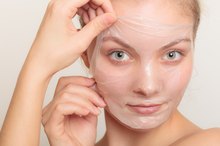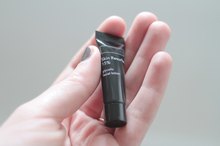How to Dilute a TCA Peel
A trichloroacetic acid peel will remove the outer layers of skin to force new skin to grow 1. This cosmetic procedure may reduce fine lines, scarring and age spots for some individuals. According to the CNN Health website, a chemical peel may also remove actinic keratosis spots, a pre-cancerous skin condition caused by exposure to UV rays from the sun. Retailer Yavonae Skin Care reports the stronger the solution the deeper the peel 1. Diluting the formula of the chemical peel will help reduce some side effects, such as burning, and is necessary if you purchase a full-strength compound.
Mix the full-strength solution with an equal part of purified water to create a 50 percent dilution. For example, if you pour 1 teaspoon of the acid product, add 1 teaspoon of water to dilute it by half. Stir the mix carefully with a cotton swab.
How to Use Retin-A 0.05
Learn More
Dilute the 50 percent solution in half again to create a 25 percent TCA peel. Pour 1 teaspoon of the 50 percent dilution into a new container. Add 1 teaspoon of purified water to the already diluted chemical. This creates a 25 percent TCA peel.
Wash a small area on your forearm with mild soap and water. Pat the spot dry with a clean towel and then wipe the clean area with an alcohol pad.
How to Heal Burned Skin From Glycolic Acid
Learn More
Put on protective gloves and dip a cotton ball or pad into the 25 percent solution. Dab the peel onto the clean area of your skin to perform a patch test. Rinse the test area with cool water after four minutes unless the burning is intense. The patch test will help you determine if the further dilution is necessary. Lay a cotton pad with cool water over the site as a compress after rinsing. Apply a thin layer of antibacterial ointment on the test spot.
Monitor the test spot for 24 hours. The area should be pink or brown, and the skin should blister and peel. If the burning is too intense at 25 percent, further dilute the solution before applying the peel. To create a 12.5 percent chemical solution, take the 25 percent mixture and dilute it with equal parts water. If you have 1 teaspoon of 25 percent solution, mix in 1 tsp. of purified water to make a 12.5 percent dilution.
Tips
Yavonae Skin Care reports that a 25 percent dilution will work well for most individuals. The test spot will let you know if the 25 percent compound is too strong from your skin type. Excessive burning or peeling indicates further dilution may be necessary. Always perform a patch test before applying a TCA peel to determine the proper strength for your skin. Apply sun block to any areas affected by a TCA peel. New skin will be sensitive to sun.
Warnings
Applying a peel that is too strong may lead to scarring. If you have any medical condition, are pregnant or breastfeeding, talk to your doctor before using a TCA peel. Do not apply a TCA peel to any skin treated with isotretinoin. Do not use isotretinoin on skin after a peel for six months to reduce risk of scarring.
Related Articles
References
- Yavonae Skin Care: Trichloroacetic Acid (TCA) Peel Instructions
- O'connor AA, Lowe PM, Shumack S, Lim AC. Chemical peels: a review of current practice. Australas J Dermatol. 2018;59(3):171-181. doi:10.1111/ajd.12715
- Castillo DE, Keri JE. Chemical peels in the treatment of acne: patient selection and perspectives. Clin Cosmet Investig Dermatol. 2018;11:365–372. doi:10.2147/CCID.S137788
- Soleymani T, Lanoue J, Rahman Z. A practical approach to chemical peels: a review of fundamentals and step-by-step algorithmic protocol for treatment. J Clin Aesthet Dermatol. 2018;11(8):21–28.
- Cleveland Clinic. Chemical peels: what to expect.
- Cleveland Clinic. Chemical peels: how to prepare.
- Stanford Healthcare. Techniques: our approach to chemical skin peels.
- Cleveland Clinic. What results can I expect?.
Writer Bio
Writing since 1999, Darla Ferrara is an award-winning author who specializes in health, diet, fitness and computer technology. She has been published in "Mezzo Magazine" and Diet Spotlight, as well as various online magazines. Ferrara studied biology and emergency medical technology at the University of Nebraska and Southeast Community College.









